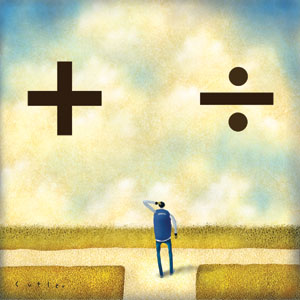 There may be better games than Drop 7 in the iPhone’s App Store, but I haven’t found them. This ridiculously simple game is, hands down, the most addictive puzzle game I’ve played since Puzzle Fighter. The concept is simple: You drop discs with numbers on them, and when the number of adjoining discs matches the number on any or all discs within that grouping, those discs explode and drop down anything above them.
There may be better games than Drop 7 in the iPhone’s App Store, but I haven’t found them. This ridiculously simple game is, hands down, the most addictive puzzle game I’ve played since Puzzle Fighter. The concept is simple: You drop discs with numbers on them, and when the number of adjoining discs matches the number on any or all discs within that grouping, those discs explode and drop down anything above them.
Why is it always so hard to describe exactly how a puzzle game works, even when it’s the simplest thing in the world?
Anyway, this is the kind of game that just squeezes itself into your brain and will not leave. Any time I see a narrow column of, well, just about anything, I catch myself beginning to imagine dropping a "2" disc next to it or a "1" on top. It’s a sickness. But I’ll tell you, I have not played a game that devours time like this one does in years.
The thing that’s really getting me addicted, I think, is the fact that the game has this perfect, pure logic to it, a logic that a seriously mathematically inclined person would be able to instantly decode from a single screen shot.
Like this one:

[EDIT: For those of you who are trying to figure out if you’d like this game, I wanted to explain a little bit more what’s happening in this screenshot. The 3 and 5 are both exploding because they’re in rows with 3 and 5 adjoining discs. This will drop the 4 down to row 3. That will leave the 1 sitting by itself, so it too will explode. Nothing else will happen this turn, but things get very interesting in three drops (the discs in the bottom left show you how many more drops before another row of blank discs comes up from the bottom). At that point, assuming those drops haven’t changed things too much, the remaining 3 will be pushed up to row 3, causing it to explode. Same deal with the 4s, which move up to row 4; as this happens, the 4 on the left will reveal the number in the grey disc below it, which has been "cracked" by the exploding 5. (It takes two adjacent explosions to turn a blank disc into a number disc.) And the 6 on the right will also explode, because the column it’s in will now be 6 discs high. I don’t remember this from the game, I just reconstructed it by looking at this screenshot. That’s the kind of pure logic I’m talking about.]
And because of this mathematical relationship, it’s possible to formulate a gameplay strategy mathematically.
For example, if you drop a 4-disc on a column containing three 7-discs, you know that at some point, as more discs move up from below, all three 7s will disappear, followed by the 4. In other words, if x is the disc you need to position, and y is the number of discs in a stack, you know that x disappears anytime x=y. But because every OTHER x disappears when x=y, you also know that x is guaranteed to disappear anytime it’s dropped on a stack containing n(n-x) discs, assuming (n-x) > 0.
I’m sure there’s a more elegant mathematical way to express all this, but I do words for a living, not math. My point is just that a game this pure, this simple, wedges itself between the folds of your brain and does. not. leave.
Those of you with iPhones, give it a try and see if you agree. It’s a steal at $2.99, especially if gameplay time impacts your sense of a game’s value. But with the amount of time I’ve been playing this beautiful creation, I think we’d need calculus to express how much.


